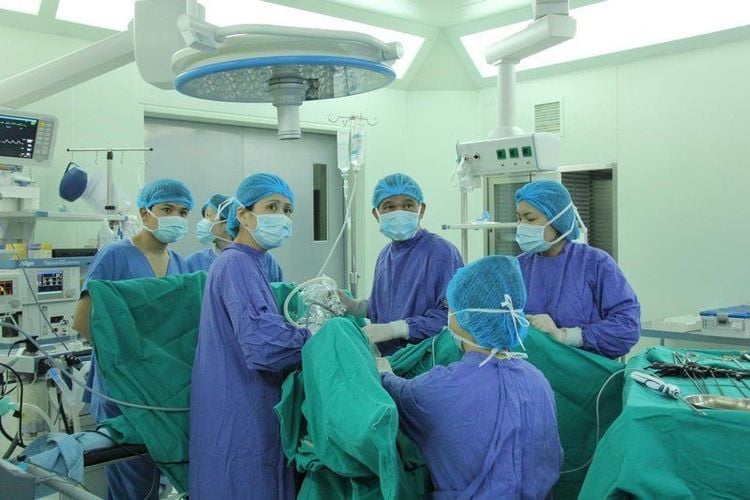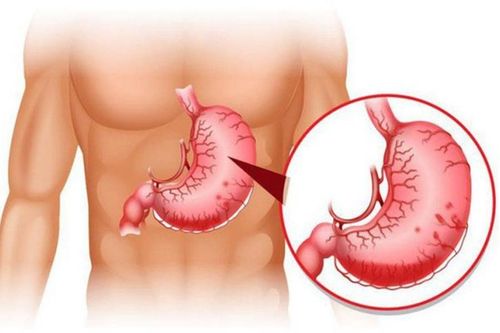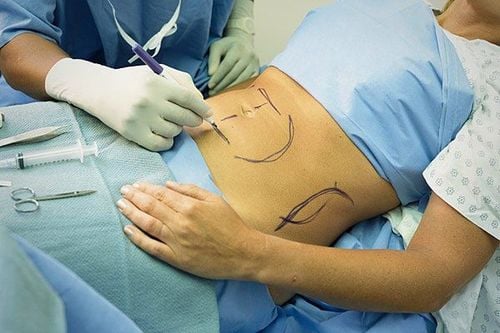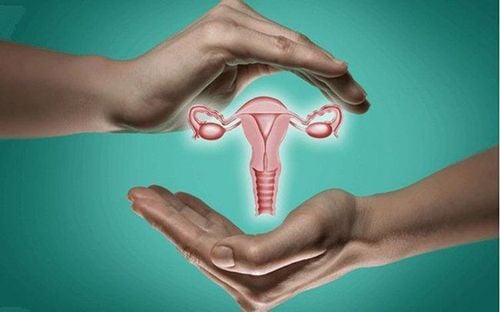This is an automatically translated article.
The article was professionally consulted by Bachelor Tran Hue Tran - IVF Specialist - Reproductive Support Center - Vinmec Times City International Hospital.Currently, laparoscopic surgery plays an increasingly important role in the treatment of tubal obstruction. This method aims to accurately diagnose whether the fallopian tubes are really blocked or not, and surgically treat and reconstruct the tubes in cases of tubal fluid retention and adhesions. Currently, this is a method that is bringing high efficiency, safety, acceptable cost and is widely applicable.
1. Subjects needing examination for tubal occlusion
All subjects with a history of genital tract infections, abortions, and IUDs should have a reproductive health examination to determine the cause and early treatment of infertility to achieve the highest effectiveness.The indicated test is X-ray of the uterus — hysterosalpingogram (HSG - hysterosalpingography). The purpose is to probe the uterine cavity and the degree of tubal circulation. If the patient is diagnosed with tubal occlusion, laparoscopic diagnostic and interventional surgery is required.

Nên đi khám sức khỏe sinh sản nhằm điều trị sớm vô sinh
2. Subjects indicated for laparoscopic surgery to treat tubal occlusion
Laparoscopic tubal surgery is indicated in the following cases:Infertility due to blockage of the fallopian tubes on one or both sides Infertility with unknown cause. Uterine dilatation with hydronephrosis For patients with tubal occlusion, combined with complex adhesions to the pelvis, severe bowel will be pre-diagnosed and unmanageable by laparoscopy. In addition, people with medical conditions that do not respond to surgery are also not eligible for this treatment.
3. How to treat blocked fallopian tubes?
Step 1: Diagnostic hysteroscopyPlacing a speculum to expose the vagina and cervix Fixed cervical clamp Dilation of the cervix in case of necessity Passing the hysteroscope through the cervix Saline injection physiologically inflates the uterine cavity and then inserts the scope into the uterine cavity to investigate from the cervical canal to the uterine cavity, the uterine lining, 2 fallopian tubes to examine the lesions (polyps, adhesions, cancer, etc) and manage according to the lesion (laparoscopic surgery or curettage biopsy of the uterine lining). Place the transcervical pump Step 2: Laparoscopy
Inflate the peritoneum through the needle or through the trocar Insert the laparoscope into the abdomen Assess the entire abdomen, liver and pelvis (uterus, 2 ovaries) , 2 fallopian tubes, etc.) Poke two trocar 5 on both sides of the pelvic fossa for manipulation, add another trocar 5 on the joint in case of difficulty to see Inject methylene blue through the cervix and assess the level through the fallopian tube . If the two tubes are open and soft, the surgery is over. If the two tubes are fluid, blocked, then proceed to intervene Remove the adhesions of the fallopian tubes and around the uterus, ovaries, sac with Douglas Open the catheter and shape the tubal canal. Inject methylene blue through the cervix and re-evaluate. degree of tubal passage after surgery In the case of bilateral tubal fluid retention, the two tubes are no longer functional, discuss with the previous patient and family members to remove the tubes, leaving two ovaries Hemostasis with an electric knife Clean the abdomen, remove CO2 and withdraw the trocar from the abdomen and suture the trocar hole Remove the speculum and pump Disinfect the cervix and vagina.

Nội soi ổ bụng điều trị tắc vòi tử cung
4. Complications after laparoscopic surgery to treat blocked fallopian tubes
Some complications that may occur with patients undergoing laparoscopic surgery to treat tubal occlusion include:Uterine perforation Injury to blood vessels, urinary system, digestive system during surgery Infection of the surgical site due to the lack of sterility of the instruments and the steps to carry out the surgery Complications of anesthesia in surgery To help customers detect and treat other gynecological diseases early, Vinmec International General Hospital has an examination package, Screening for basic gynecological diseases, helping customers to detect early diseases of inflammatory diseases makes treatment easy and inexpensive. Screening detects gynecological cancer (cervical cancer) early even when there are no symptoms.
Basic gynecological examination and screening package for female customers, has no age limit and may have the following symptoms:
Abnormal vaginal bleeding Having menstrual problems: irregular menstrual cycle, irregular menstrual cycle Irregular vaginal discharge (smell, different color) Vaginal pain and itching Female clients have several risk factors such as poor personal hygiene, Unsafe sex, abortion,... Female customers have other symptoms such as: Abnormal vaginal discharge, itching, pain in the private area, abnormal vaginal bleeding.
Please dial HOTLINE for more information or register for an appointment HERE. Download MyVinmec app to make appointments faster and to manage your bookings easily.













